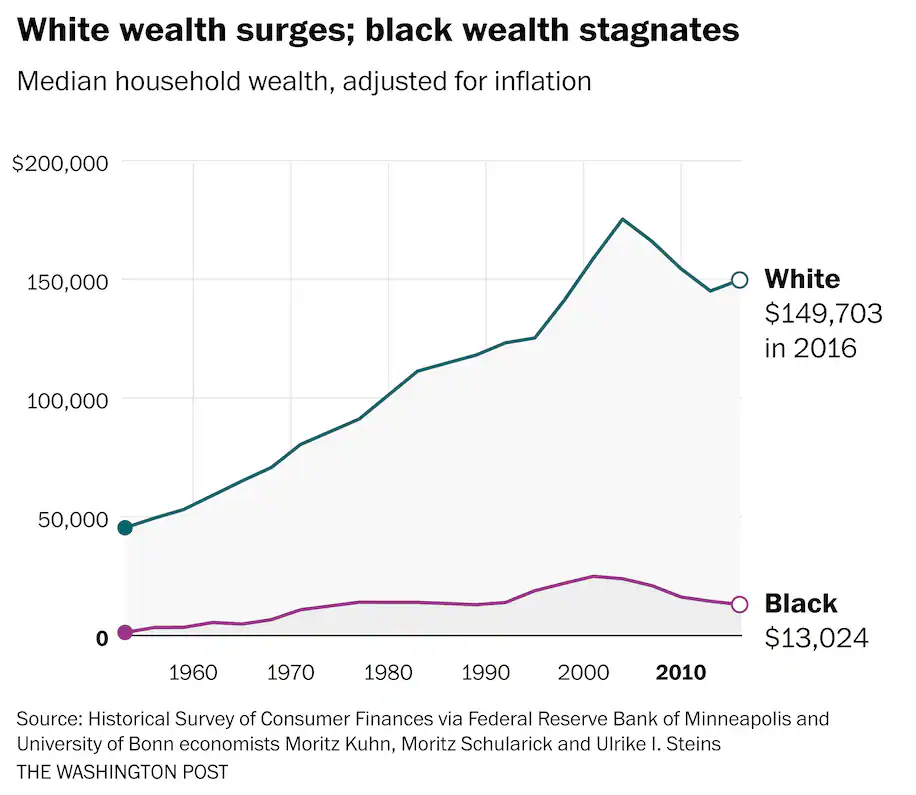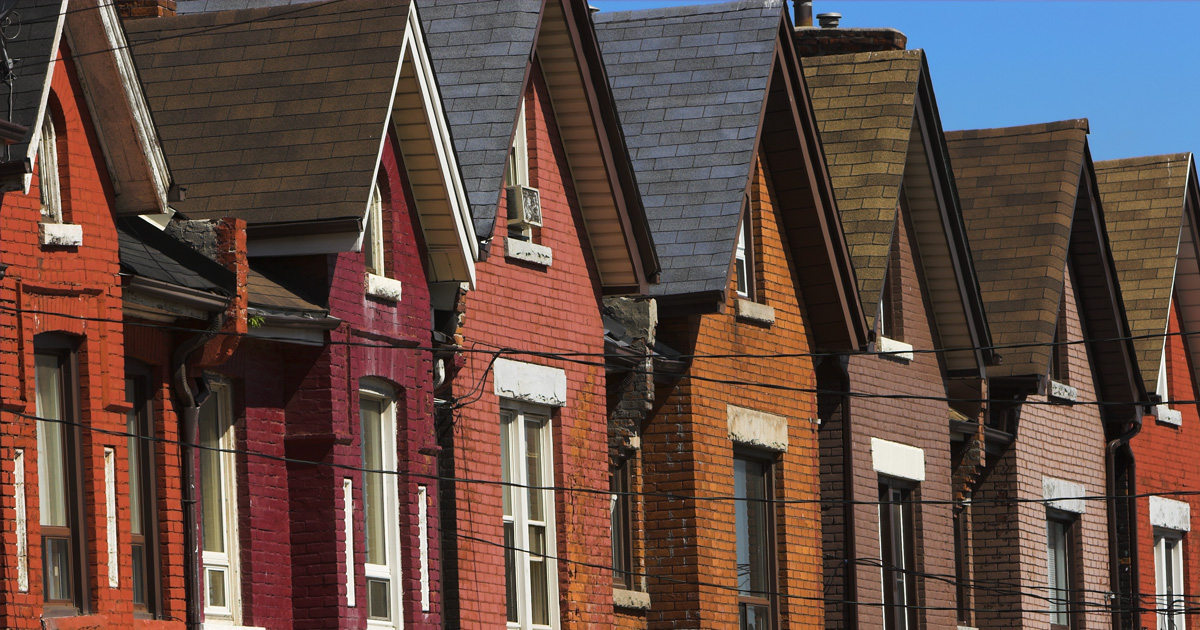Written by Scott Chang, Senior Counsel, National Fair Housing Alliance and Saba Mwine-Chang, Managing Director, Homelessness Policy Research Institute
The Fair Housing Act is our nation’s primary fair housing law. On April 11, 1968, President Lyndon Johnson signed into law Title VIII of the Civil Rights Act of 1968, known as the federal Fair Housing Act. The law was passed seven days after the assassination of Dr. Martin Luther King, Jr. to honor Dr. King’s work to create fair or “open” housing in the U.S.
The twin goals of the Fair Housing Act are to prohibit discrimination in housing, and to replace existing patterns of residential racial segregation with “truly integrated and balanced living patterns.”
Notwithstanding, racial discrimination in market rate housing informs the disproportionate representation of people of color experiencing homelessness. Here’s a look back at how this history of structural racism has created these disparities in homelessness, and how adherence to the Fair Housing Act is critical to addressing our nation’s current housing crisis.
A Brief History of Federal Housing Discrimination
For much of America’s history, communities of color were systematically excluded from economic opportunities through explicit policy decisions. In fact, many laws — Indian Removal Acts, Slave Codes, Fugitive Slave Acts, Repatriation Acts, Chinese Removal Act, Black Codes, Sundown Ordinances, the Japanese Internment Act, Racially Restrictive Covenants, and many more — were purposefully designed to provide opportunities to Whites and simultaneously deny opportunities to people of color. White property owners and subdivision developers included provisions in property deeds forbidding the resale and sometimes rental of such property to people who were not White. Racially restrictive covenants were endorsed by the federal government and the real estate industry at least through the 1940s. In some cases, covenants were required by banks and other lending institutions.
In addition to racially restrictive covenants, explicit zoning prevented people of color from integrating into White neighborhoods. Even though racially explicit zoning was ruled unlawful by the Supreme Court in 1917, the practice continued in less obvious ways for decades. During the New Deal, the Home Owners Loan Corporation or “HOLC” was established. The HOLC used feedback from real estate professionals to develop risk categories and maps that were explicitly based on the unfounded association between race and risk. Color coded maps devised by HOLC indicated Black and other communities of color as undesirable and unworthy of investment, hence the term “Redlining.”
How the Federal Government Perpetuated Housing Segregation
The Federal Housing Administration contributed to the segregation of our neighborhoods. The 1938 Fair Housing Administration Underwriting Manual stated:
Areas surrounding a location are investigated to determine whether incompatible racial and social groups are present, for the purpose of making a prediction regarding the probability of the locations being invaded by such groups.”
In addition, the Federal Housing Administration required racially restrictive covenants in exchange for supporting new housing developments in the suburbs. Even after the Supreme Court declared in 1948 that racially restrictive covenants were not enforceable, the Federal Housing Administration gave preferential treatment to developers that adopted racially restrictive covenants.
Enormous investment in white homeownership via the GI Bill, reinforced by centuries of discriminatory policies by government and private actors, have driven the homeownership gap between Black and White individuals to proportions larger than before the passage of the Fair Housing Act (see chart below). Latinos and other communities of color also lag behind the White homeownership rate. Given that homeownership is the cornerstone of building wealth in the United States, it is not surprising that the wealth gap between Whites and communities of color remains large and persistent.

Source: The Washington Post
How We Can Use the Fair Housing Act to End Homelessness
In every state, Black Americans are more likely than Whites to experience homelessness (NAEH 2018). Appropriately, in recent years, homelessness providers, researchers, and local and national government agencies have recognized systemic racism is a major driver of homelessness. As we continue to understand homelessness as a housing justice issue, we invite you to consider how the Fair Housing Act can aid efforts to end homelessness.
The Fair Housing Act is one of our most comprehensive civil rights laws. It prohibits a wide range of discriminatory housing practices and provides strong remedies, including injunctive relief and damages. Protected classes under the Fair Housing Act include Race, Color, Religion, National Origin, Sex (including sexual orientation and gender identity), Disability, and Familial Status.
Some state and local laws also prohibit source of income discrimination: discriminating against any lawful manner in which a person supports herself or her dependents. Several federal housing subsidies fall under source of income, including Housing Choice Vouchers, Veterans Affairs Supportive Housing, and Emergency Housing Vouchers.
Assisting People Experiencing Homelessness Through Fair Housing
The Fair Housing Act and state fair housing laws can be critical and effective tools to help people experiencing homelessness locate and maintain housing.
First, it can prevent discrimination in land use and zoning and remove barriers to building affordable housing for people experiencing homelessness.
In United States v. City of New Orleans, a non-profit affordable housing developer attempted to redevelop a nursing home into permanent supportive housing for people with disabilities who formerly experienced homelessness. The city attempted to delay and block the project by refusing to grant necessary zoning changes. Comments made by neighbors at the hearings on the zoning changes included, “These are people who really need more intensive care. In truth, they should be in an institutional setting.” The United States Department of Justice filed a lawsuit alleging that the city violated the Fair Housing Act and the case eventually settled. The settlement requires that the city agree to provide all appropriate permits, amend its zoning ordinance to allow permanent supportive housing, and prepare and implement a reasonable accommodation policy approved by the United States.
Second, state and local fair housing laws can assist people experiencing homelessness to be able to use their vouchers.
In Equal Rights Center v. Belmont Crossings Apartments, a counseling agency attempted to place a veteran who was experiencing homelessness into housing, using an emergency housing subsidy for veterans. The apartment complex refused to accept the voucher. Since discrimination against voucher holders is unlawful under D.C. law, the agency complained to a D.C.-based fair housing organization. The fair housing organization conducted fair housing testing in which testers posed as prospective renters or buyers. In a typical test, both of the testers have similar qualifications but one of the testers is a member of a protected class and the other tester is not. They document how they are treated by housing providers. While posing as a prospective tenant, a tester called the apartment complex and said she wished to use the voucher to help pay for a portion of the rent for a one-bedroom apartment. The apartment’s representative told the tester that although there was a one bedroom available for rent, the property did not accept vouchers or any short-term subsidies. A lawsuit was filed. The settlement in the case required that the apartment complex accept short term subsidies and provided for a substantial monetary payment.
Other provisions of fair housing laws that may assist people experiencing homelessness include obtaining reasonable accommodations and helping people with criminal backgrounds obtain housing. A person with a disability may make a “reasonable accommodation” request to alter a rule, policy, practice, or service if such a change is necessary to provide the person with an equal opportunity to use and enjoy the housing. A reasonable accommodation could assist, for example, a person experiencing homelessness who has difficulty climbing stairs due to a disability to obtain a first floor apartment. Refusing to rent to people with criminal backgrounds may violate fair housing laws if housing providers have a blanket policy of refusing to accept people with criminal backgrounds without considering individual circumstances.
Conclusion
The Fair Housing Act is a critical tool to ensure that people experiencing homelessness can get back into housing and maintain it in a safe and equitable manner. With anti-discrimination measures in place for land use and voucher use, communities should leverage the protections of the Fair Housing Act to best serve people experiencing homelessness in their communities through Fair Housing Month and beyond.
Stay Updated: Solutions, Stories, and Ways to Make an Impact
Sign up to receive updates on the Alliance’s work, including the latest research, advocacy efforts, and real stories of progress — plus ways you can help drive lasting change.














